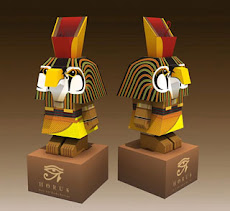* ABC Analysis
Separating the vital few from the trivial many
The Concept
Over 100 years ago, Vilfredo Pareto made the statement that “twenty percent of the population owned 80 percent of the property in
How To Use ABC Analysis: Sally’s Grocery Store
While ABC analysis can be used for many different things, we are going to look at it from an inventory perspective. To better understand this tool, we are going to talk about Sally who owns a grocery store. She is fairly profitable, but would like to focus on the items that create more revenue. As you work this analysis, I will refer back to Sally’s grocery store, and how her analysis went.
First : make a list of all inventory items and how many you keep in stock.
Second : organize your list by those items that generate the most revenue.
Third : now that we have prioritized the inventory, we will classify them as “A,” “B,” and “C” items.
· To do that we will first calculate total revenue by finding the revenue of each item.
· Then, calculate the percent for each item. In this case, you would divide the total revenue generated by the stools by the total revenue created from all inventory items.
· This is where you can use a bit of discretion in deciding where to categorize items.
In this example, we are going to use the following breakdown:
Every case will be different, so the percentages you use may need to be specific to your case. Most ABC analyses are done using this breakdown:
As you can see, stools fall into classification “A,” toothbrushes, balloons, and paper towels fall into classification “B,” and magazines, flowers, apples, and squash fall into classification “C.”
Proving the Pareto principle, we can see that although you may have a small amount of a certain item, it may create the largest amount of revenue. Sally may think that because she has the largest number of balloons she should spend all of her time tracking and selling balloons, but, in reality, the stools are creating the largest amount of revenue.
Fourth : now that you have categorized your inventory, you can determine the monitoring systems and controls that are needed.
“A” class items: Need to be watched carefully. For example, at a store that I worked at, they had security devices attached to the vacuums because they would sell for $500 or $600. In Sally’s situation, she may want to have her employees count the stools each day. She also may want to develop a more delicate way to store her stools so that she doesn’t lose any to scrap.
“B” class items: While still important, these items may be counted once every quarter or month. They will require less monitoring.
“C” class items: These items can be referred to as “free stock,” and monitoring them may be a waste of your time (e.g. Sally counting her apples every day may not be beneficial.)
The versatile ABC Analysis
As discussed previously, this tool allows you to prioritize tasks or items according to the greatest return. ABC analysis can be used for just about any decision and the following are a few areas it can be applied:
· Quality Problems
· Inventory
· Customers
· Errands
· Homework
· Friends
· Household Chores
· Shopping
· Along with many others
To get more info on ABC Analysis
· Manufacturing planning and control systems for supply chain management by Thomas E. Vollman
· The 80/20 Principle: The Secret to Success by Achieving More with Less by Richard Koch
· Pareto Charts: Plain & Simple (Learning and Application Guide) by Joiner Associates
· Tools of Total Quality: an introduction to statistical process control by P. Lyonnet
· Applying the 80/20 Rule to Your Business by Jeffrey J. Mayer
· The Six Sigma Basic Training Kit: Implementing Juran’s 6-Step Quality Improvement Process and Six Sigma Tools by the Juran Institute













